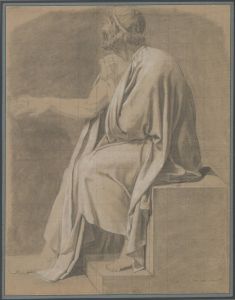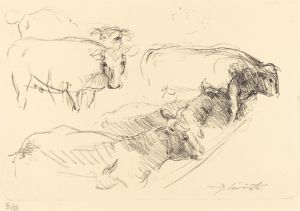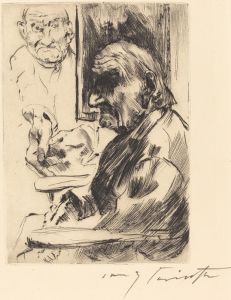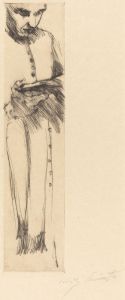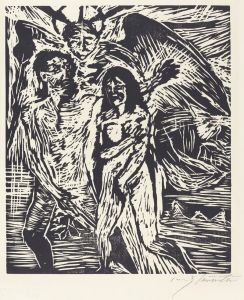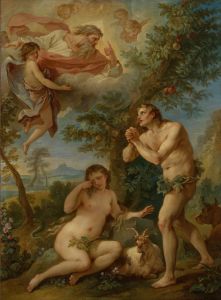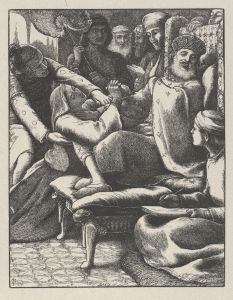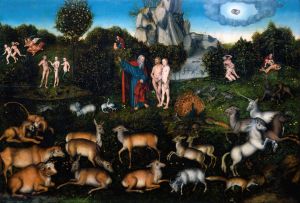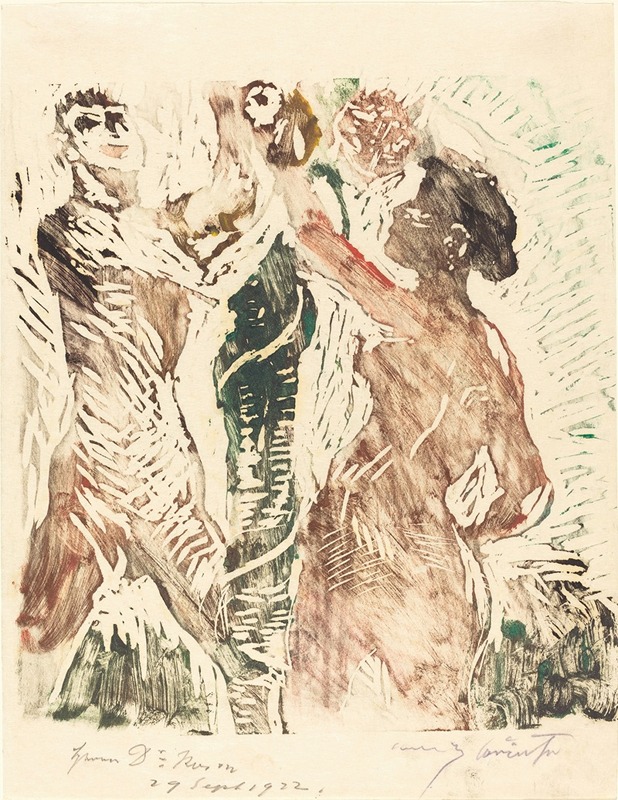
The Fall of Man
A hand-painted replica of Lovis Corinth’s masterpiece The Fall of Man, meticulously crafted by professional artists to capture the true essence of the original. Each piece is created with museum-quality canvas and rare mineral pigments, carefully painted by experienced artists with delicate brushstrokes and rich, layered colors to perfectly recreate the texture of the original artwork. Unlike machine-printed reproductions, this hand-painted version brings the painting to life, infused with the artist’s emotions and skill in every stroke. Whether for personal collection or home decoration, it instantly elevates the artistic atmosphere of any space.
Lovis Corinth's The Fall of Man is a painting created in 1917 by the German artist, who was a prominent figure in the transition from Impressionism to Expressionism. Corinth is known for his dynamic brushwork and emotionally charged compositions, and this work is no exception. The painting depicts the biblical story of Adam and Eve, a theme that has been a recurring subject in Western art for centuries.
In The Fall of Man, Corinth portrays Adam and Eve in a moment of intimacy and tension, capturing the pivotal episode from the Book of Genesis where humanity's first ancestors succumb to temptation. The figures are rendered with Corinth's characteristic vigor, blending naturalistic detail with expressive distortion. The composition emphasizes the human form, with Adam and Eve depicted in the nude, a traditional approach in art history to symbolize their innocence before the fall. The serpent, a key element in the narrative, is also present, coiled around the Tree of Knowledge, offering the forbidden fruit.
The painting reflects Corinth's mature style, which had evolved significantly after he suffered a stroke in 1911. This event left him partially paralyzed on his left side, but it also marked a turning point in his artistic approach. Post-stroke, his works became more expressive and emotionally intense, as seen in The Fall of Man. The brushstrokes are bold and dynamic, and the use of color conveys a sense of drama and foreboding, aligning with the moral weight of the subject matter.
Corinth's interpretation of the story diverges from idealized depictions of Adam and Eve by earlier artists. Instead, his figures are more corporeal and grounded, emphasizing their humanity. This approach reflects the broader trends in early 20th-century art, where traditional themes were reinterpreted through modern sensibilities.
The painting is part of Corinth's extensive body of work that explores religious and mythological themes. It demonstrates his ability to infuse classical subjects with a modern, personal perspective. The Fall of Man is housed in the Museum Wiesbaden in Germany, which holds a significant collection of Corinth's works. The museum's collection highlights the artist's contributions to German art and his role in bridging 19th-century traditions with 20th-century innovations.
Lovis Corinth remains a key figure in art history, and The Fall of Man exemplifies his ability to merge technical skill with emotional depth, offering a compelling interpretation of a timeless narrative.





